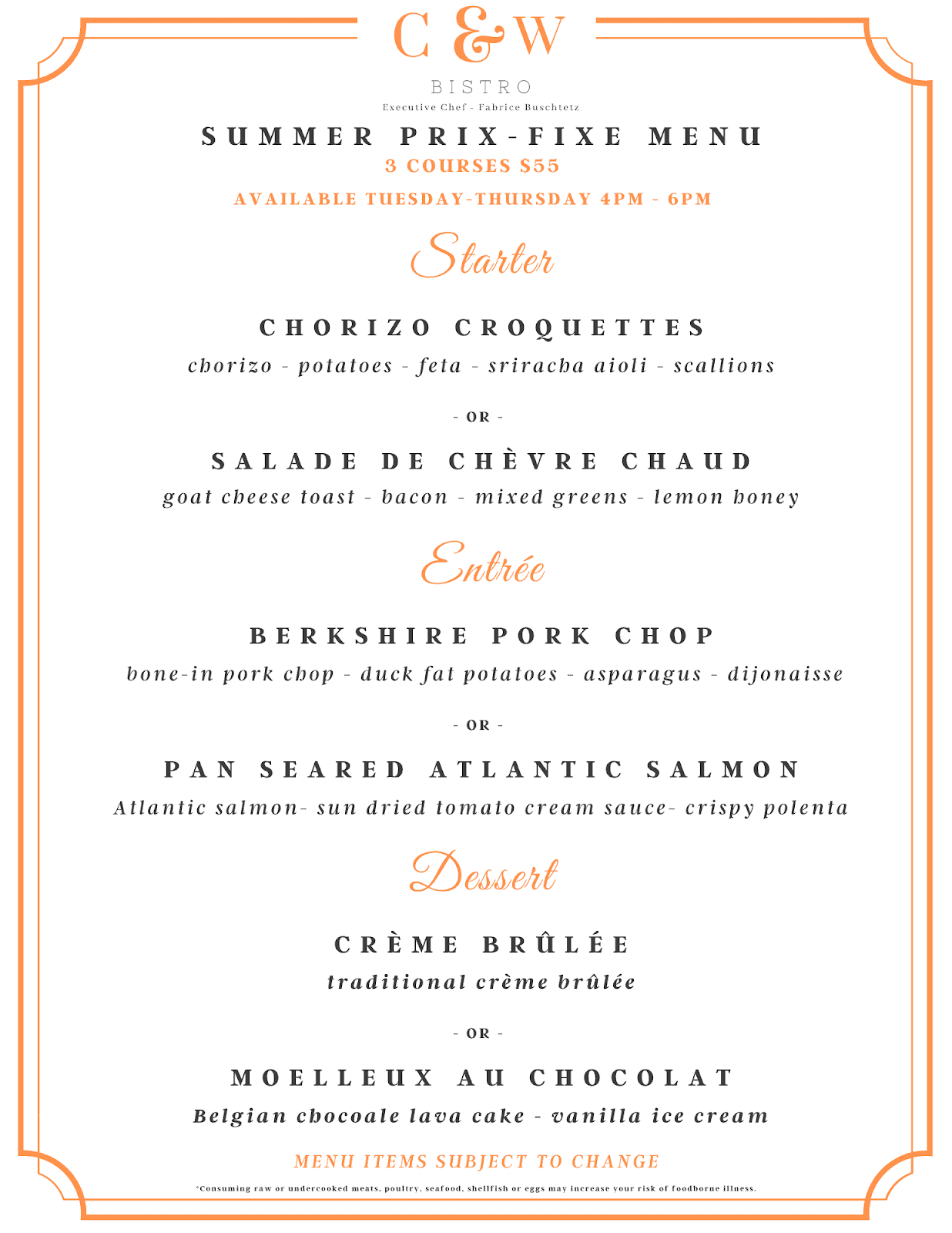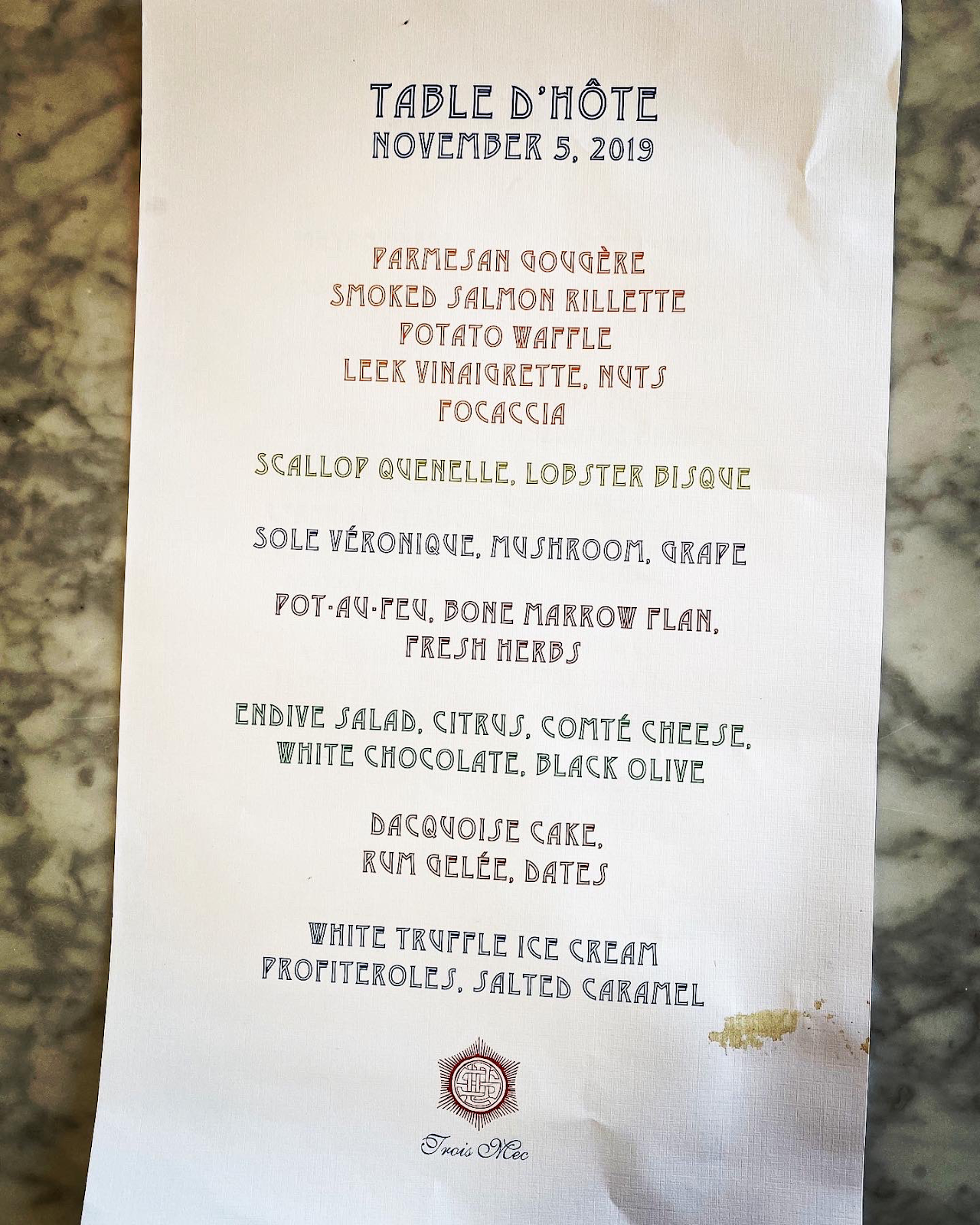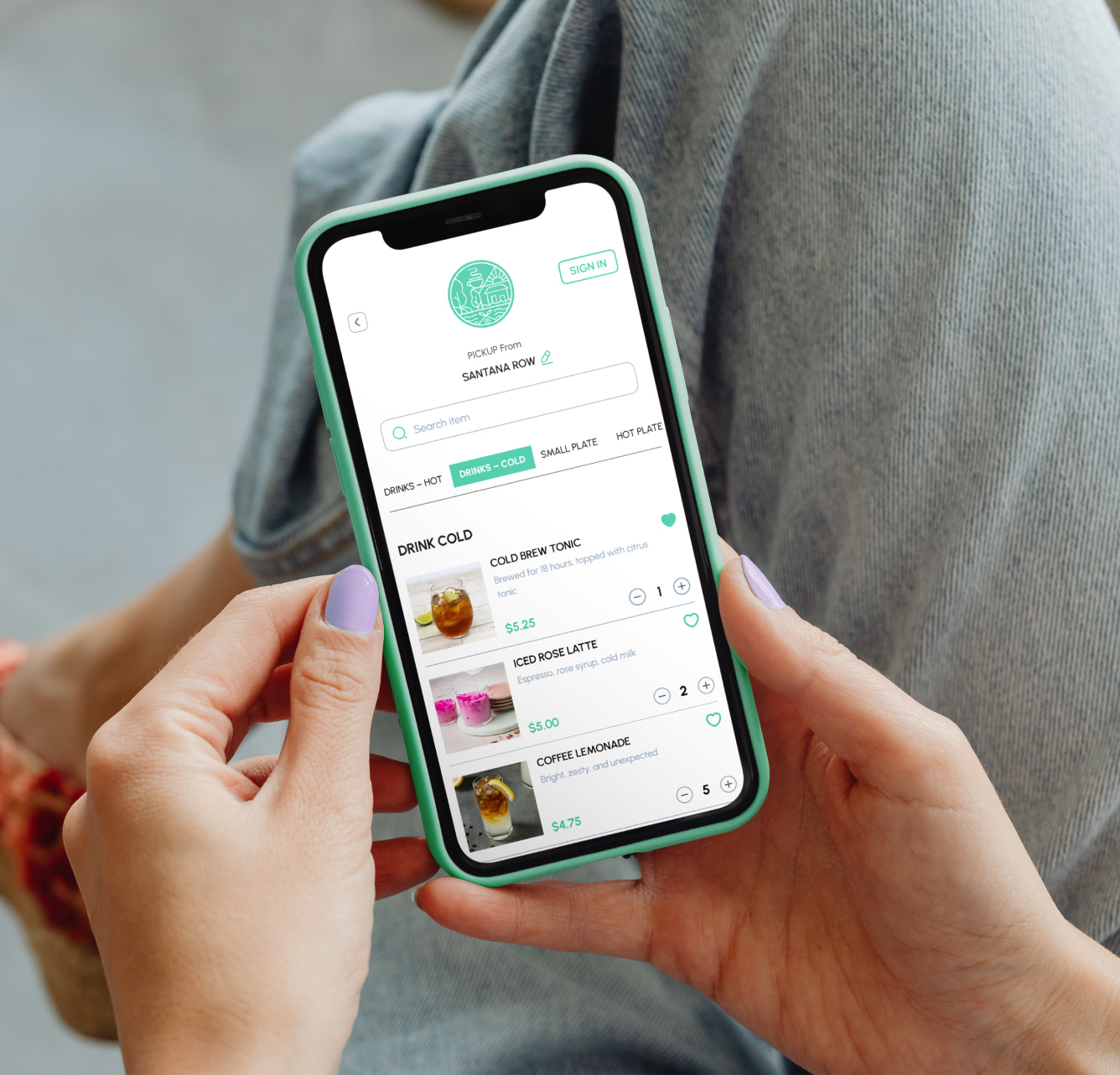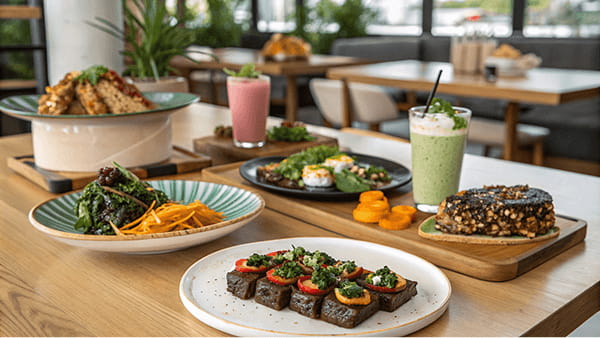Key Takeaways
- Optimize your kitchen operations: By narrowing down the number of dishes, you make prep more predictable, plating more consistent, and service faster, especially when the rush hits
- Boost profits with built-in upsells: Use a prix fixe menu as a foundation to offer add-ons like wine pairings, upgraded mains, or desserts that feel like a splurge but are easy to serve
- Turn every meal into a branded experience: Leverage this format to guide your dinner through a curated journey, one that reflects your concept and leaves a lasting impression
- Price with confidence and clarity: Consider your highest-cost meal combo to set a base price and build your margins from there; protect your profits no matter what
- Treat your menu like a marketing campaign: Theme your menu, create a story around it, and share the behind-the-scenes build-up across social and email
Picture this: you're seated at a cozy, intimate restaurant.
The lights are low. A glass of wine awaits at your table, catching the soft glow of candlelight. The waiter hands you a menu—not pages of choices but an elegant, short menu promising a multi-course experience—a prix fixe menu.
As a diner, it's effortless.
But behind the scenes, it's a different story. A prix fixe menu is a strategic tool if you're a restaurateur. It offers a thoughtful way to elevate the culinary journey, simplify kitchen operations, and boost the bottom line. So, how do you craft one that does all that?
Here's your guide to everything you need to know about prix fixe menus.
What Is a Prix Fixe Menu?
A prix fixe menu, derived from the French term for "fixed price" and pronounced as pree-fix, offers a full meal for a set rate. It's also called a "set menu" or "tasting menu," it typically comprises three courses but can feature anywhere from two to ten.
Restaurants often choose this menu format to celebrate holidays or events, highlight seasonal ingredients, or run a smoother dinner service.
Prix Fixe vs à la Carte: What's the Difference?
With an à la carte menu, diners choose individual dishes from a complete list, mixing and matching to their taste.

But with a prix fixe, diners follow the menu and everything that comes with it. This usually comprises an appetizer, a salad or soup, a main course, a dessert, and sometimes a drink. In some cases, they may have the flexibility to choose within a course, like picking between two entrées.

While the concept of a set menu is straightforward, how it's executed can vary widely across cultures. Look at global examples that bring the prix fixe experience to life.
Prix Fixe Menu Examples
Here's what different versions of the menu look like, plate by plate:
1. Kaiseki (Japan)
This is a refined, multi-course meal where dishes arrive one at a time. You might start with a delicate sashimi plate, followed by a clear soup, a grilled fish course, a simmered seasonal vegetable, and a matcha dessert.

2. Menú del Día (Spain)
It's a casual lunch set typically served at local Spanish cafés. For instance, it includes a bowl of gazpacho or a mixed salad, followed by grilled pork chops with potatoes and flan or fruit for dessert. Diners get a glass of house wine or a coffee, all for a single price.

3. Thali (India)
This is a full meal served on a round metal plate. You'll see small bowls of dal (lentils), a vegetable or curry, rice, roti or naan, chutney or pickle, yogurt, and a sweet like gulab jamun. Everything is served together, offering a variety of flavors in one setting.
.png)
4. Table d'hôte (France/Quebec)
This is a rustic, countryside-style set menu. Expect a creamy leek and potato soup, roast chicken with herbed vegetables, an apple tart, or pot de crème for dessert. The options are limited but hearty.

Seeing those global styles, you can tell how flexible and impactful a prix fixe menu can be. But beyond the diner experience, there are advantages for your restaurant operation, too.
Prix Fixe Menu Benefits for Restaurants
Here's why a prix fixe menu is one of the most popular menu trends to adopt:
1. Optimize Kitchen Operations
In a prix fixe menu, you only need to focus on a limited number of items. This minimizes the complexity of cooking. You can prep and deliver meals in batches at peak quality.
This format also allows for better inventory management as you can precisely forecast the ingredients needed, thereby reducing waste.
2. Showcase Culinary Expertise
A well-designed prix fixe menu lets you demonstrate your chef's creativity and command of flavor. It allows you to create a rounded dining experience where each course builds on the latest taste, texture, and theme.
3. Simplify Front-Of-House (Foh) Service
A prix fixe menu makes your FOH staff's job straightforward. Servers spend less time explaining or upselling complex options, and order-taking becomes quicker and more accurate.
They know exactly what's coming next, how it should be timed, and what the guests will need at each stage. For example, they might put more bread on the table, top off the water before the main course arrives, or serve coffee just as dessert hits the table.
4. Increase Revenue With Higher Average Check Sizes
Precision is key when considering a prix fixe menu from a cost perspective. Since diners commit to multiple courses upfront, they're willing to spend more than when they would order à la carte. The set price should seem like a value, even when it's slightly higher. Plus, prix fixe menus enable easy upsells, like specialty cocktails, that can further boost revenue.
Of course, no format is perfect. Let's look at a few potential drawbacks you'll want to consider before rolling one out.
Disadvantages of Prix Fixe Menus
While prix fixe menus come with many advantages, they're not without drawbacks.
1. Limited Flexibility For Guests
Not everyone wants a full multi-course meal, and some diners may feel boxed in by the lack of choice. Dietary restrictions, allergies, or picky preferences can make this menu format restrictive.
2. Pressure To Execute Perfectly
Consistency matters a lot since the same dishes are served at many tables. If one element is off—say, the chicken is slightly undercooked, or the sauce is missing its final garnish—it's amplified across every plate. There's less room for improvisation mid-service.
3. Fewer Chances For Impulse Purchases
With à la carte menus, diners might spontaneously add a side, an appetizer, or a second dessert. With prix fixe, that spontaneity is gone chiefly unless you're strategic with add-ons like cheese courses or a fancy dessert upgrade.
Five Tips to Create the Best Prix Fixe Menu
Prix fixe menus aren't restricted to fine-dining restaurants. Small cafés, family-run eateries, and even upscale gastropubs can adopt them successfully. Here's how.
1. Define The Experience You Want To Offer
First, step back and ask yourself: What kind of experience do we want to create? Is this menu for a special occasion? It may be the restaurant's 20th anniversary. Or is it inspired by the season? It could be peak mango season.
Think carefully; this will set the tone for everything, from the dishes you choose to how you price and present them. It also clarifies for your staff why the prix fixe menu exists.
2. Decide On The Number Of Courses And Dishes To Match
Determining the number of courses you'll offer in the prix fixe menu is essential. Two or three courses create a casual, satisfying experience. Four or five stars to look like a tasting. Therefore, choose a structure that fits your concept and kitchen bandwidth.
At the same time, list all possible dishes that can become a part of this menu format. What can realistically be executed during a busy service? Think of the components that must be prepped in advance, finished quickly, or cooked using the same station.
A three-course meal, for instance, could feel heavy if every dish is rich and carb-forward. Conversely, a five-course menu can seem light if you balance small portions, acidity, and texture.
Here's one of the prix fixe restaurant menu examples you can use:
- Starter: Beet carpaccio or French onion soup
- Main: Duck confit or Wild mushroom pappardelle
- Dessert: Chocolate tart or Poached pear with vanilla cream
Here, the diner feels customized, but your line cooks aren't stretching themselves thin by preparing 12 different combos.
3. Consider Drink Pairings
A great pairing enhances the food, adds a sense of occasion, and elevates your menu from "nice meal" to "wow, that was special."
You don't need a complete liquor list for this. Even offering a curated cocktail per course or a flight of three wines can do the trick. Crafting mocktails, sake, natural sodas, and even a tea pairing can give your menu an edge.
4. Set The Right Price
To create the perception of value, you want diners to feel like they're getting a great deal and a superior experience. But when pricing a multi-course menu, you need to guarantee you make money no matter what's chosen.
So, work your way backward:
- Look at your most expensive possible combination (usually the priciest main course)
- Add up your food cost across all included items (appetizer, main meal, dessert, drink)
- Use that total to set your base menu price; this will allow you to build in a margin (typically 3x your cost or ~30–35% food cost)
Let's say you have a prix fixe menu that costs diners $50.
A worst-case combo would be if a diner picks:
- Caprese Salad ($4)
- Grilled Salmon ($18)
- Lava Cake ($4.50)
- Wine ($5)
The total cost of this meal is $31.50.
If you charge $50, your gross profit is: $50 – $31.50 = $18.50
That's a healthy and sustainable 63% profit margin (or ~37% food cost).
Alternatively, if someone picks your cheapest combo:
- Squash Soup ($3)
- Mushroom Risotto ($10)
- Crème Brûlée ($4)
- Sparkling water ($2)
The total cost of this meal is $19.
If you charge $50, your gross profit is: $50 – $19 = $31
Result: Your food cost is never higher than $31.50, keeping your margins safe.
5. Promote Your Prix Fixe Menu Across All Platforms
Your menu is ready, your kitchen is prepared, and your pricing is set. Now, make sure people know it exists. Promote the menu like you would an event: build anticipation, showcase the experience, and make it feel limited or special, even if it's a regular thing.
Don't just post a photo of the menu and forget about it. Tease the experience with behind-the-scenes shots of your team plating, ingredient sourcing, wine tastings, or handwritten menu drafts. Consider your prix fixe menu a marketing asset.
In addition, use Instagram Stories, Reels, newsletter, your restaurant's website, and the reservation flow for promotions.
Take Your Prix Fixe Menu Online with RestoLabs
Your prix fixe menu doesn't have to stay inside your restaurant. With the rise of online food delivery and takeouts, curating at-home experiences that mirror the same care of in-person dining can be just as special, especially for date nights, birthdays, or stay-in celebrations.
Since everything is pre-set, you can prep and package more efficiently, maintain quality, and create consistency across each order. The best part is that using the right digital tools allows you to embrace this revenue stream without adding complexity.
RestoLabs, for instance, is a powerful and easy-to-set-up online ordering system. It enables you to accept orders through your website, mobile app, and QR codes while simplifying marketing your ordering links on social media like Facebook and Instagram.
Here's how the platform maps to what you need for prix fixe menus:
- Custom branded ordering: Create a standalone ordering page tailored to your menu, whether it's "Date Night at Home" or a rotating "Chef's Seasonal Tasting;" personalize it to match your brand look and voice across desktop and mobile
- Multi-location management: If you're running more than one location, RestoLabs' Multi-Location Features enable you to clone prix fixe menus across stores, set location-specific delivery/tax rules, and view and manage all orders in one centralized dashboard
- Advanced order management: Take pre-orders for specific days and time windows, set separate lead times for pickup and delivery, pause orders during peak hours with Order Throttle, and manage delivery zones with Multiple Delivery Controls
- Push personalized promotions: Create time-sensitive promo codes for special menus, tailor deals based on order history or preferences, and let customers earn points for every order.
- POS and software integrations: Integrate seamlessly with your POS, KDS and Payment providers.
Isn't that simple?
We hope this blog inspired you to create and promote your prix fixe menu. It's a fascinating process that can work well in in-house or online settings.
Book a demo with RestoLabs today to see how we help restaurants create modern, flexible digital menus that boost profits and customer experience.
Frequently Asked Questions
To promote a prix fixe menu online, focus on creating a sense of exclusivity. Highlight the experience through captivating content on social media, using high-quality images of the dishes and behind-the-scenes moments. Encourage user-generated content by asking guests to share their experience. Collaborate with influencers or local food bloggers to extend your reach.
The frequency of changing your prix fixe menu depends on your restaurant’s concept and seasonality. It’s ideal to refresh the menu every 3-4 weeks to keep things interesting for returning customers, incorporate seasonal ingredients, and reflect evolving culinary trends. For special events or holidays, you might introduce limited-time prix fixe menus to create a sense of urgency and exclusivity.
Yes, a prix fixe menu can be highly profitable if executed correctly. By offering a set price for multiple courses, you can predict food costs, reduce waste, and streamline kitchen operations. It also allows for upsells like drink pairings, desserts, or specialty items. When priced appropriately, a prix fixe menu can boost your average check size and ensure consistent margins, making it a strong revenue driver.


.gif)


%2520(10).png)


.png)


